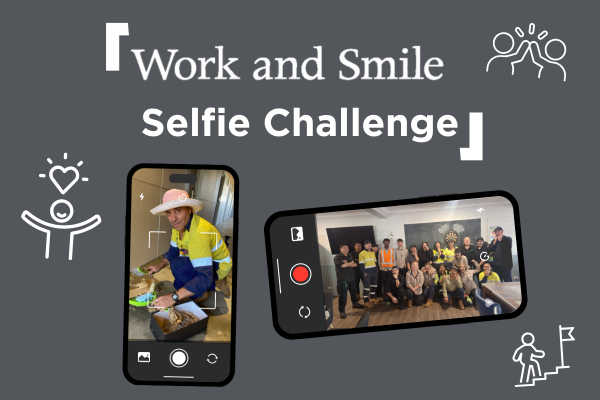At Programmed, we all have part to play in making sure all of us go home safe to our loved ones every day. Our monthly Spotlight on Safety series is designed to help us keep safety in mind as our top priority and to champion our positive safety culture.
Our focus for July is Working around Asbestos and Silica.
Asbestos and silica based products are common and present in many buildings and facilities across Australia and New Zealand. The products are safe if not disturbed and stable, however if disturbed and not handled correctly, the products can pose a risk.
Back to Basics - Safe Work Essentials
As a high-risk activity, Working around Asbestos and Silica is one of our Safe Work Essentials.

What is silica and asbestos and why they risky?
Crystalline silica (quartz) is a natural mineral found in stone products such as reconstituted stone (sometimes called engineered or artificial stone), granite, and sandstone. It can also be found in other building materials and manufacturing products such as concrete, bricks, mortar, tiles, and some filler/putty products.
When disturbed, silica can form a dust fine enough to penetrate deep into the lungs during the process of cutting, sanding, drilling or grinding. With prolonged or regular exposure, inhalation of this dust can result in deadly diseases like silicosis, lung cancer, and kidney disease.
The percentage of silica in products can vary - it is particularly dangerous in engineering stone products due to the high proportion of silica in the product (up to 90%), but it is also still harmful in other products as listed above when disturbed, hence why controls must be adopted when working with these products.
You can read more about silica in the toolbox talk linked below.
Asbestos is a group of naturally occurring minerals made up of microscopic fibers, with many Asbestos Containing Materials (ACMs) remaining hidden in buildings constructed before 2004.
If ACMs are damaged or disturbed during work or demolition, asbestos fibers can be released into the air, which if inhaled, can lead to asbestos-related diseases.
Friable asbestos, a material containing asbestos in the form of a powder or able to be crumbled, is particularly dangerous due to its ability to become airborne. Some items that can contain friable asbestos include fire retardants and insulation.
You can read more about asbestos in the toolbox talk linked below.
Silica - Engineered stone ban
Due to the high proportion of silica in engineered stone, Australia adopted a national engineered stone ban commencing in Australia on 1 July 2024 - while some jurisdictions have implemented transitional arrangements, some have not. The most recent update is available below.
New Zealand is yet to implement a ban.

Resources to help keep you and your teams safe
Programmed has many additional resources available to keep you properly informed and educated on staying safe when working around asbestos and silica.
Our HSE Team offers Silica Awareness and Asbestos Awareness training modules that you can complete at your convenience.
You can access Safe Operating Procedures (SOP) documents and a Safe Work Essential Standard for Asbestos and Silica below.
| SOP - Preparing & Painting Asbestos Sheeting | SOP - Silica Dust Control Management | Safe Work Essentials - Working around Asbestos and Silica Standard |
Some tasks will require a Safe Work Method Statement (SWMS) - these templates are available on ProSafe.
Further to the above, there are also tools available in ProSafe to audit works involving Silica and Asbestos, including Worksite Review and Critical Risk Review.
If you have any questions regarding these documents and procedures or have trouble accessing them, please reach out to your HSEQ team member or email safety@programmed.com.au.

.png)


